Ensuring Safety in the Warehouse: Protecting People from Machinery Hazards
Date Posted:20 May 2024
Protecting people from machinery hazards in the warehouse is a multifaceted endeavor that requires a combination of engineering controls, administrative measures, PPE, and ongoing vigilance.
Warehouses are bustling hubs of activity, with machinery playing a crucial role in operations. While these machines increase efficiency and productivity, they also pose significant risks to workers if proper safety measures are not in place. In this blog, we'll explore essential strategies for safeguarding warehouse workers from machinery hazards, ensuring a safe and secure working environment for all.
Understanding the Risks
Before delving into protective measures, it's crucial to understand the potential risks associated with warehouse machinery. Moving parts, pinch points, entanglement hazards, and heavy loads are just a few examples of dangers that workers may encounter. Without adequate protection, these hazards can lead to serious injuries or even fatalities.
Risk Assessment and Management
The first step in protecting people from machinery hazards is conducting a thorough risk assessment. This involves identifying potential risks, evaluating their severity and likelihood, and implementing measures to control or eliminate them. Risk assessment should be an ongoing process, regularly reviewed and updated as new machinery is introduced or processes change.
Engineering Controls
Engineering controls are physical measures designed to prevent contact between workers and machinery hazards. Examples include machine guarding, barriers, shields, and interlocks. These controls serve as a barrier between workers and moving parts, reducing the risk of accidental contact or entanglement. Properly designed and installed engineering controls are essential for minimizing the risk of injury in the warehouse.
Administrative Controls
Administrative controls focus on establishing safe work procedures and operating protocols for machinery use. This includes developing written safety procedures, providing comprehensive training to workers, and ensuring that only authorized personnel operate machinery. Regular safety meetings and toolbox talks can also reinforce safe work practices and encourage open communication about safety concerns.
Personal Protective Equipment (PPE)
While engineering and administrative controls are essential, they may not always eliminate all risks. In such cases, personal protective equipment (PPE) serves as a final line of defense against machinery hazards. PPE such as safety goggles, gloves, ear protection, and protective clothing can help mitigate the impact of accidents and injuries. It's important to provide appropriate PPE to workers and ensure that they are trained in its proper use and maintenance.
Regular Maintenance and Inspections
Proper maintenance of machinery is essential for ensuring safe operation. Regular inspections and maintenance checks can help identify potential safety issues before they escalate into serious problems. This includes checking for worn or damaged parts, lubricating moving components, and addressing any abnormalities or malfunctions promptly. By keeping machinery in good working condition, the risk of accidents and injuries can be significantly reduced.
Emergency Procedures
Despite best efforts to prevent accidents, emergencies can still occur. That's why it's essential to have clear and effective emergency procedures in place. This includes protocols for shutting down machinery in an emergency, evacuating the area, and providing first aid to injured workers. Regular drills and training exercises can help ensure that workers are prepared to respond quickly and effectively to emergencies.
Continuous Improvement
Ensuring safety in the warehouse is an ongoing process that requires commitment and vigilance from all stakeholders. By fostering a culture of continuous improvement, organizations can continually identify and address safety concerns, implement best practices, and adapt to changing conditions. This may involve soliciting feedback from workers, conducting safety audits, and investing in new technologies or equipment to enhance safety performance.
Collaboration and Communication
Effective communication and collaboration are essential for maintaining a safe workplace. This includes fostering open dialogue between management, workers, and safety representatives about safety concerns, near misses, and potential hazards. By encouraging workers to report safety issues and actively involving them in safety discussions, organizations can identify and address risks more effectively.
Protecting people from machinery hazards in the warehouse is a multifaceted endeavor that requires a combination of engineering controls, administrative measures, PPE, and ongoing vigilance. By conducting thorough risk assessments, implementing appropriate controls, providing comprehensive training, and fostering a culture of safety, organizations can create a workplace where workers can perform their duties confidently and safely. With a commitment to safety at all levels, warehouses can minimize the risk of accidents and injuries, ensuring the well-being of their most valuable asset—their people.



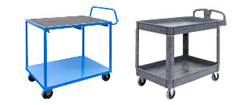

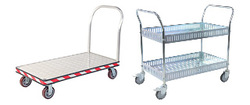
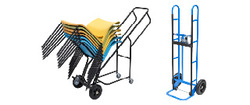
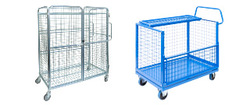
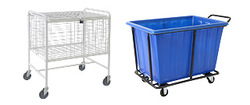
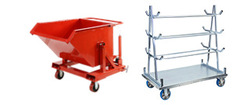

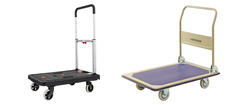
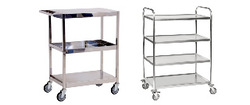
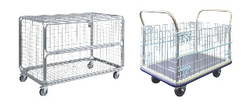
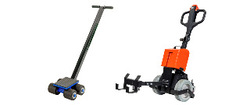
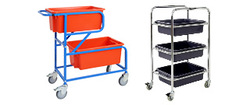
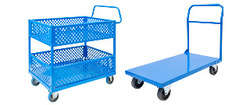
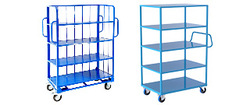
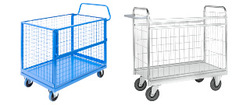
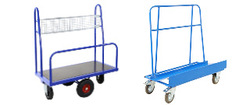
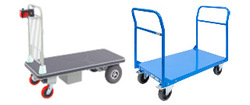
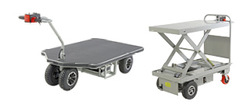
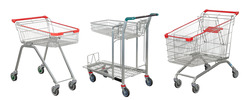
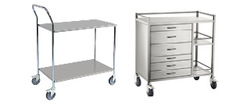
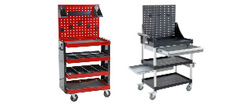
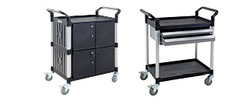
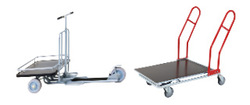
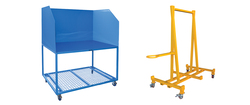



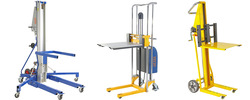



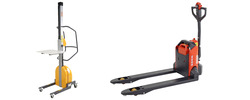
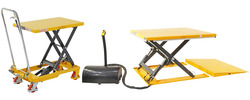
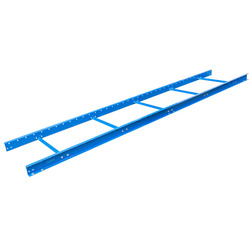
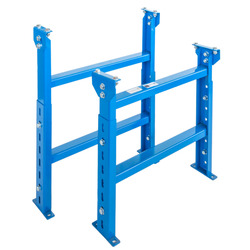
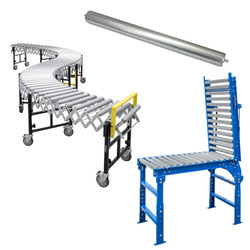
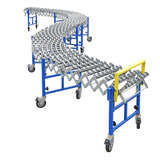


















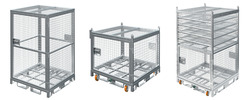

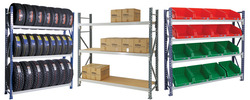
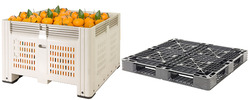
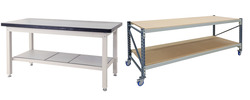
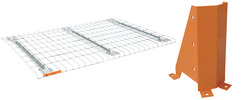




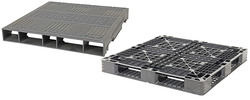

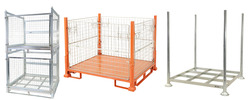
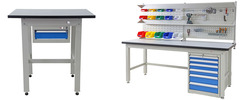
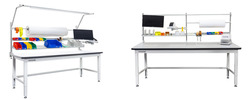


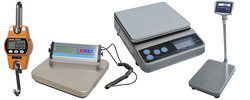



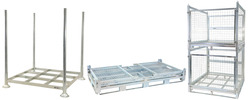
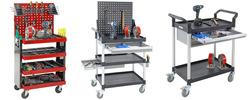
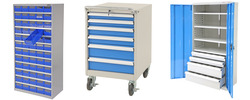

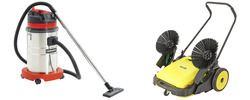











 Trolleys / Hand Trucks
Trolleys / Hand Trucks 2 Tier Trolleys
2 Tier Trolleys 3 Tier Trolleys
3 Tier Trolleys Aluminium Trolleys
Aluminium Trolleys Appliance & Hand Trucks
Appliance & Hand Trucks Cage Trolleys
Cage Trolleys Cleaning Carts & Trolleys
Cleaning Carts & Trolleys Construction Trolleys
Construction Trolleys Dollies
Dollies Foldable Trolleys
Foldable Trolleys Hospital Trolleys
Hospital Trolleys Laundry/Linen Trolleys
Laundry/Linen Trolleys Load Skates & Tow Tugs
Load Skates & Tow Tugs Mail / Office Trolleys
Mail / Office Trolleys Multi Purpose Trolleys
Multi Purpose Trolleys Multi-Tier Shelf Trolleys
Multi-Tier Shelf Trolleys Order Picking Trolleys
Order Picking Trolleys Panel Cart Trolleys
Panel Cart Trolleys Platform Trolleys
Platform Trolleys Powered Trolleys
Powered Trolleys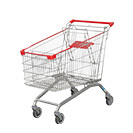 Shopping Trolleys
Shopping Trolleys Stainless Steel Trolleys
Stainless Steel Trolleys Tool Trolleys
Tool Trolleys Utility Carts
Utility Carts Warehouse Trolleys
Warehouse Trolleys Custom Trolleys
Custom Trolleys Lifting Equipment
Lifting Equipment Forklift Attachments
Forklift Attachments Jib Attachments
Jib Attachments Lifting Hoists & Pallet Hooks
Lifting Hoists & Pallet Hooks Manual Stackers & Lifters
Manual Stackers & Lifters Pallet Jacks
Pallet Jacks Pallet Lifters
Pallet Lifters Pallet Rotators & Dispenser
Pallet Rotators & Dispenser Powered Pallet Trucks & Electric Lifters
Powered Pallet Trucks & Electric Lifters Scissor Lift Trolleys and Tables
Scissor Lift Trolleys and Tables Conveyor Equipment
Conveyor Equipment Conveyor Frames
Conveyor Frames Conveyor Stands
Conveyor Stands Roller Conveyors
Roller Conveyors Skate Wheel Conveyors
Skate Wheel Conveyors Access Equipment
Access Equipment Container & Yard Ramps
Container & Yard Ramps Step Stools & Ladders
Step Stools & Ladders Work Platforms & Crane Cages
Work Platforms & Crane Cages Drum Handling
Drum Handling Drum Storage & Bunding
Drum Storage & Bunding Drum Trolleys & Lifters
Drum Trolleys & Lifters Forklift Drum Handling
Forklift Drum Handling Containment & Spillage
Containment & Spillage Aerosol Cans Storage Cages
Aerosol Cans Storage Cages Bunded Pallets & Storage
Bunded Pallets & Storage Corrosive Goods Storage Cabinets
Corrosive Goods Storage Cabinets Flammable Liquid Cabinets
Flammable Liquid Cabinets Forklift Gas Storage Cages
Forklift Gas Storage Cages Gas Cylinder Storage
Gas Cylinder Storage Site Storage
Site Storage Spill Kits
Spill Kits Stillage Cages
Stillage Cages Waste Handling
Waste Handling Bin Lifters & Tippers
Bin Lifters & Tippers Plastic Waste Bins and Carts
Plastic Waste Bins and Carts Steel Waste and Tipping Bins
Steel Waste and Tipping Bins Storage Equipment
Storage Equipment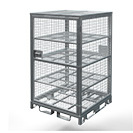 750 Series Cage Configurations
750 Series Cage Configurations Heavy Duty Cabinets & Benches
Heavy Duty Cabinets & Benches Heavy Duty Shelving
Heavy Duty Shelving Mega Bins & Pallets
Mega Bins & Pallets Packing Benches
Packing Benches Pallet Racking Accessories
Pallet Racking Accessories Parts Trays & Stor-Pak Bins
Parts Trays & Stor-Pak Bins Pegboard & Louvre Panels
Pegboard & Louvre Panels Plastic Bins
Plastic Bins Plastic Handling Solutions Bins
Plastic Handling Solutions Bins Plastic Pallets
Plastic Pallets Stack & Nest Bins
Stack & Nest Bins Storage Cages
Storage Cages Workplace Equipment
Workplace Equipment Workbenches
Workbenches Modular Workbenches
Modular Workbenches Electric Height-Adjustable Workbenches
Electric Height-Adjustable Workbenches Floor Matting
Floor Matting Industrial Weighing Scales
Industrial Weighing Scales Pallet Wrapping & Packaging Machinery
Pallet Wrapping & Packaging Machinery Ramps
Ramps Stationery Cupboards
Stationery Cupboards Storage and Stillage Cages
Storage and Stillage Cages Tool Trolleys
Tool Trolleys Tooling Cabinets
Tooling Cabinets Wheelie Bins
Wheelie Bins Workshop Equipment
Workshop Equipment Safety Equipment
Safety Equipment Gloves and PPE
Gloves and PPE Pallet Rack Post Protectors
Pallet Rack Post Protectors Safety Barriers & Bollards
Safety Barriers & Bollards Safety Knives & Cutters
Safety Knives & Cutters Signs and Traffic Supplies
Signs and Traffic Supplies Tool & First Aid Boxes
Tool & First Aid Boxes Construction Equipment
Construction Equipment Concrete Equipment
Concrete Equipment General Site Equipment
General Site Equipment Lifting Equipment
Lifting Equipment Site Storage
Site Storage Waste
Waste 










